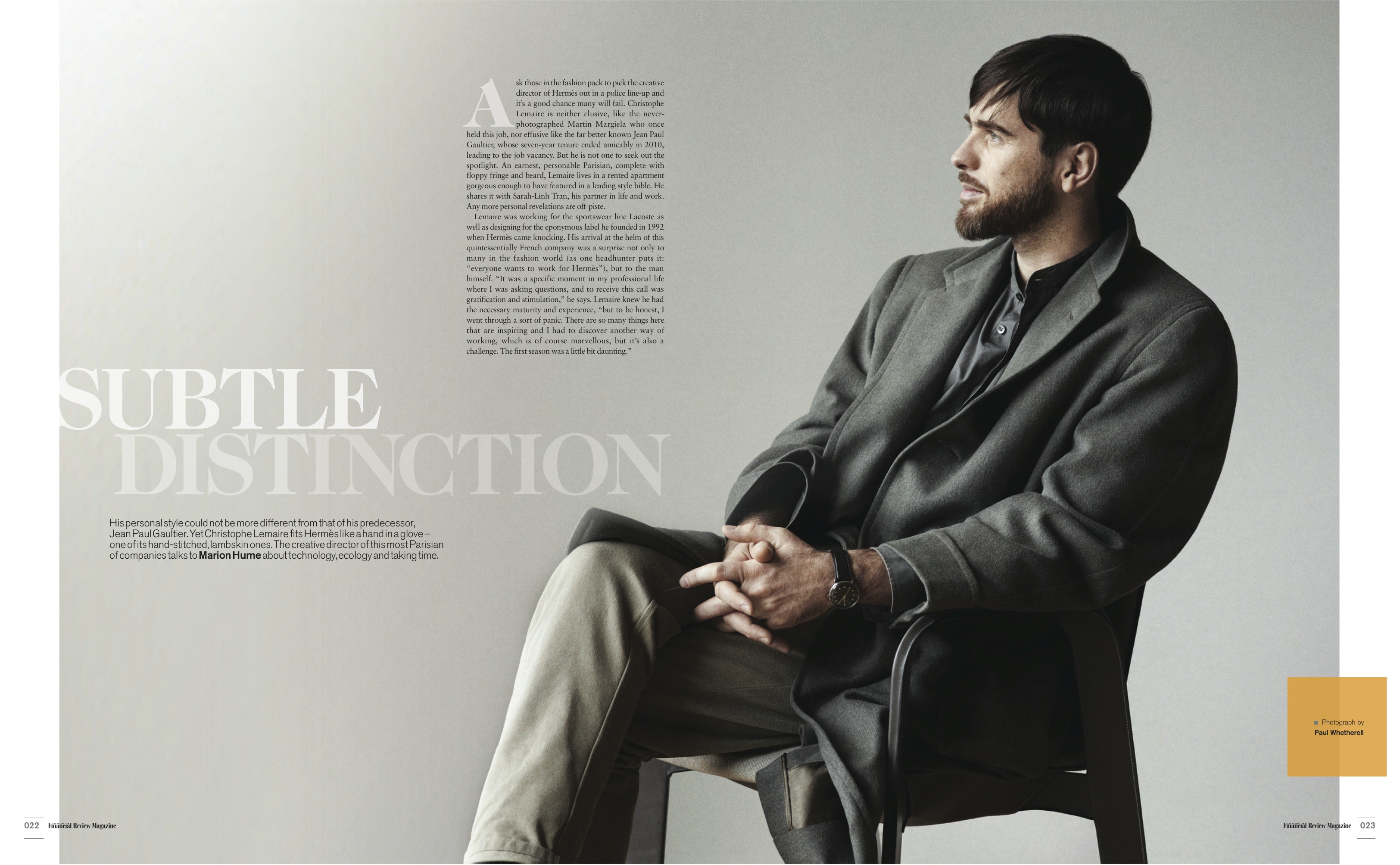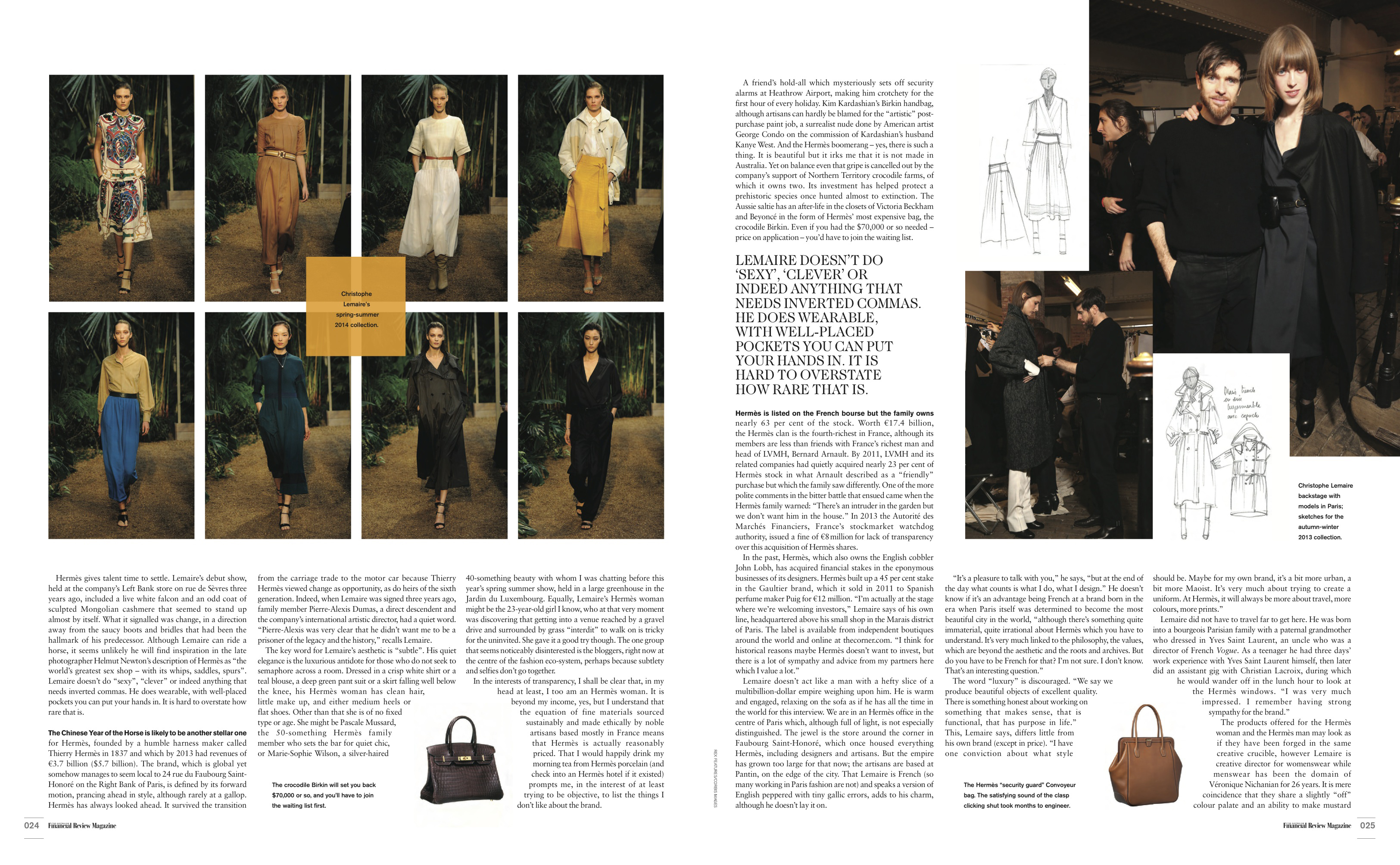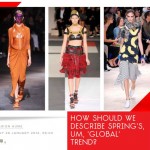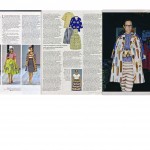Category Archives: Ethical Fashion
A joint statement from Simone Cipriani, The Ethical Fashion Initiative and Marion Hume
The United Nations’ ITC Ethical Fashion Initiative (EFI) today announces that Marion Hume will step down as senior consultant after five years.
During this time, the Ethical Fashion Initiative has expanded to be truly global with designers from Britain’s Vivienne Westwood to Australians, Sass & Bide and New Zealander, Karen Walker working with some of the world’s most marginalized artisans.
Hume, an international fashion journalist of nearly 30 years standing, with a career spanning the UK, the USA and Australia, has worked closely with the fashion media across the world to promote the possibilities of Simone Cipriani’s vision to use fashion as a vehicle out of poverty.
The Ethical Fashion Initiative has featured in global issues of Vogue, Bazaar and Marie Claire as well as the Financial Times, The International New York Times and The Economist. “Working with Simone Cipriani and the Ethical Fashion team from Geneva to Nairobi has been an extraordinary privilege, full of unforgettable memories and achievements,” says Hume. “As a fashion insider, it has been wonderful to be part of a process of shifting the needle towards more thoughtful production, to acknowledging the artisans who make our clothes and accessories and being more mindful of the environment. The biggest honour has been the human connections as artisans are empowered to change their own lives while EFI’s designer partners create truly great fashion.”
Cipriani adds; “Our time together has been great and full of achievements. I will always be grateful to Marion for the work she has done with us. Part of the reason we are where we are is because of Marion’s dedication and hard work. So, thank you, Marion, you will always be with us.”
HOW SHOULD WE DESCRIBE SPRING’S, UM, ‘GLOBAL TREND’? – NEVERUNDERDRESSED.COM
www.neverunderdressed.com BY MARION HUME
SUNDAY 26 JANUARY 2014, 06:00
For spring 2014, designers looked far beyond their backyards for inspiration, mimicking an ever expanding global market with the international flavours of their collections. The trouble is, we don’t seem to have the fashion vocabulary to describe them. Writer and ethical consultant Marion Hume on the pitfalls of provenance and why you should never say ‘tribal’
‘Designers are thinking globally this season, with plenty of African inspired beading.’
The caption, on a jacket featuring bands of blue and white braiding, is from a woman’s magazine. The question is, what is African inspired beading?
Does that mean in the style of the Magreb where the beauty might lie in unexpected juxtapositions of silver, amber and shells? Or is the inspiration the vivid creations of the Samburu, where uniformity is prized to the point that any glass bead not perfectly round is rejected? And why this sartorial esperanto that implies all is the same from Mozambique to Senegal? Designers are never ‘European-inspired’, because that might mean anything from Aran knits to Lederhosen.
AT DIOR COUTURE AW13, RAF SIMONS ‘OBSERVED DIFFERENT CONTINENTS’
”African-inspired’ is just ignorant laziness. Inspired by which part of Africa’s 54 countries exactly? Which part of its 6 different geographic zones? So 1.1 billion people inspired the collection?’ says Kiran Yoliswa, co-founder of the popular website,
But hang on. Doesn’t SBA stand for ‘Styled by Africa’? Isn’t that wrapping up a continent as one? ‘We called our brand Styled By Africa because we source collections from all over the continent and our mission is to showcase the diversity in African fashion,’ Yoliswa counters. ‘Traditional Ethiopian womenswear is very white with only hints of colour while West African women wear much brighter designs, in turn different from Mali’s mud cloth or Tanzania’s kitenges. To be ‘Styled By Africa’ means simply that the people and places of the continent have contributed in some way to what you are today, which is true of our customers, designers, and collections.’
Ok. With ‘African- inspired’ eliminated, how to describe the trends we’re currently seeing at Givenchy, Dior, Celine? What about ‘ethnic’?
‘Used to describe any non-European aesthetic. Without any real descriptive value,’ says Yoliswa.
‘Tribal?’
‘Cringeworthy, patronising. And used to describe stereotypical geometric patterned prints or beaded jewellery that could be from anywhere. With feathers usually thrown in for good measure.’
Yodit Eklund, founder of Africa’s first youth culture brand, Bantu Wax, says the T-word should be deleted, not just because it is offensive but also because it reveals the writer as hopelessly out of date. ‘Tribal, to me, refers to anything but the cultural explosion that is taking place across the African continent today,’ she says. ‘Africa is moving at the speed of light. There are more mobile users in Africa than in North America.’
‘Global traveller’ is the euphemism of the moment. All it reveals is that fashion scribes – the majority still white anglo-saxon like me – aren’t very good at geography. Or history. Or politics. But how to describe the hottest collections of the season? Some writers called Dior ‘Africa-meets-Japan’ – a distinctly unequal collision if you visualize it, given one landmass measures about 8,000km tip to toe, the other comprises hundreds of islands, (and even then, sovereignty is disputed by Russia, China, Taiwan…). Style.com managed to teeter without breaking any eggshells by noting, ‘a Maasai neckpiece, a Parisienne wrap, a Shinto scarf.. colorful, optimistic emblems of national identity.’
So as long as you avoid thinking of Africa as a country not a continent, you are specific in the nations or cultural groups you cite and you avoid using terms that expose you as a complete colonial throwback, will you then be doing ok? Then what about this scenario:
You’re at the Vivienne Westwood Gold label show. The model coming towards you is wearing a trouser suit of fabric handwoven near Ouagadougou, Burkina Faso, and she is carrying a bag screen-printed in Nairobi and beading by the Maasai in Lakipia, Northern Kenya. (All this is thanks to Westwood’s enduring collaboration with the United Nations ITC Ethical Fashion Initiative for which – full disclosure- I consult). With the best will in the world, how to be culturally correct in a tweet? Is “Dame Viv @FollowWestwood shows fab stripes and squiggles made with @_ethicalfashion #Africa” not ok?
‘I think it’s fine because it is made in different places within Africa. If it was just made in Kenya, there would be more of an argument to just say ‘Made in Kenya’.’ says Kiran Yoliswa.
Westwood’s collaboration allows marginalised artisans to join the fashion chain in a fair way. But what of all those designers who turn to the African continent for inspiration but produce elsewhere so that no profits go to the source?
‘When done properly, some places can actually benefit from the increased awareness about their cultural styles,’ counters Yoliswa, citing Burberry’s use of West African wax prints. ‘I do think this helped place African designers more in the mainstream and allowed the indirect growth of their brands as well.’ Yet, to add to the confusion, those wax prints are created by VLISCO, which is Dutch.
Let’s move on to how we describe designers themselves. In the unlikely event I were ever to cross the fence from journalism to design, I would most likely be ‘English’ (even though my heritage, not my accent, is Scottish). How to describe Nkwo Onwuka, a British designer of Nigerian heritage who lives in Nigeria yet finds inspiration from the traditional craft of the bronze casters of Benin? No wonder fashion writers opt for bland cover-all lines such as, ‘Nkwo Onwuka is worth watching.’
All this is not only ‘An African Problem’ (to use another sweeping and inaccurate term). Let’s travel to the Americas and Walter van Bierendonk’s recent menswear show which included milliner Stephen Jones’ take on a Native American feathered headdress. (Help! Should I be writing Cheyenne, Sioux or the Muscogee war bonnet?). This was daubed with the words “Stop Racism” ; allegedly a response to the headgear at the Chanel Metiers d’Art show in Dallas at the end of last year. The Metiers d’Art show at the end of 2012 had been held in Edinburgh. Yet Lagerfeld’s plays on the sporran and tam o’shanter had my Caledonian heart beating with joy, not righteous anger. Is that because my forefathers, cleared from their crofts on the orders of greedy landowners to make way for sheep at least had a chance, unlike those slaughtered in long years of government-sanctioned genocide?
Damn, fashion is fraught.
I guess where I’m going with this is at least we should acknowledge we’ve got to try harder. But we have a long way to go. This is, after all, the business that refers to a plaster pink shade as ‘nude’. Maybe this season’s style crush, Lupito Ngong’o will at least knock that lazy terminology right out of fashion.






